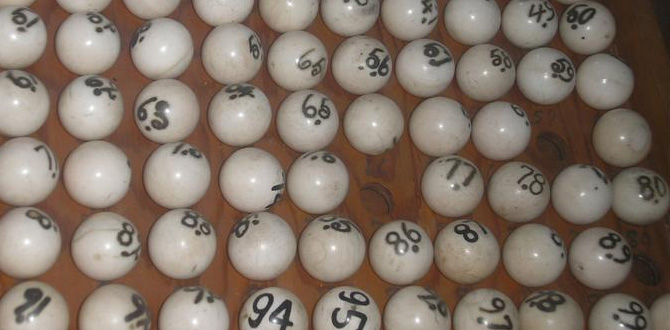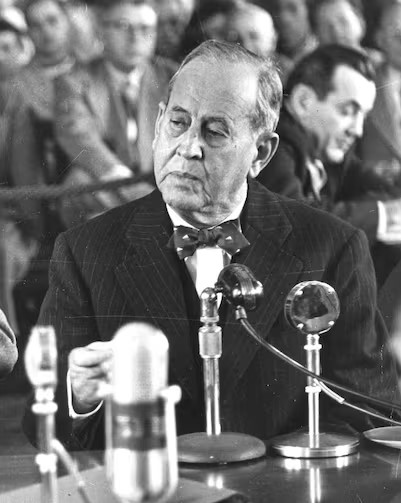Florida’s Lottery started as the Cuban game of Bolita
The modern-day lottery in Florida has a surprising origin story. Its roots lie not in the halls of government but in the bustling streets of Havana, Cuba. Around 1890, a game called Bolita, meaning “little ball,” crossed the Florida Straits and found fertile ground in Cuban communities, particularly Tampa’s Ybor City. During World War I, Bolita’s popularity transcended cultural boundaries and spread throughout the state.
The irony of Florida’s official lottery, established in 1986, is stark. For the preceding 70 years, Bolita was demonized as a destructive vice. Millions of dollars were poured into eradicating its illegal operations; tragic turf wars erupted, claiming hundreds of lives. Yet, in a remarkable turnaround, when it was proposed as a source of “educational funding,” the game (once deemed a societal ill) became a state-sanctioned revenue stream.
How did bolita work?

At its core, bolita was simple. It relied on betting that your lucky number would be selected from a pool of 100 numbered balls. Runners, known as “boliteros,” would write down bets from community members. These bets could be very small (sometimes just a nickel), making Bolita accessible to many. These illegal wagers could be placed at local corner stores, pool halls, juke joints, or fraternal orders.
The specific rules and method of selecting winning numbers varied from place to place and changed over time. However, the numbers were generally placed into a bag, which was shaken or tossed before someone blindly reached in to grab the winning number. The payout ratio varied but was often 80:1 or 90:1 if your number hit.
However, the game’s randomness was dubious. Shady operators often put their hand on the scale to favor less popular numbers (and thus avoid too many winners). Throwing a ball into the freezer or hollowing out specific balls (to make them lighter) could undo the apparent impartiality of the selection.
Mafia takes over

By 1920, the game had graduated from small-dollar local affairs to large regional operations. During the previous century, the Mafia was never far behind whenever large sums of money were involved. Ybor City was the hub of Central Florida’s illicit activities for most of the Century, especially in bolita.
Local underbosses were granted specific territories in surrounding counties. These regional monopolies were rarely questioned; when they were, they were settled with blood.
The first big boss in Ybor was Tampa native Charlie Wall (1880-1955). Wall employed mainly Cubans, Italians, and Irish as his foot soldiers. Local bolita operators functioned as franchises rather than direct crime family members in more distant counties. Ybor bosses forged alliances and business relationships with Italian and Irish mafias outside of Florida.
The 1930s was a particularly deadly time for Tampa mobsters. Historians call it the “Era of Blood” as a battle for control erupted between Wall and Ignacio Antinori. Although the hits continued beyond 1940, the chapter came to a close in October 1940 when Antinori was assassinated while drinking coffee at a local restaurant.
Wall faded into semi-retirement in the following decade as Santo Trafficante, Sr. became the new king. Wall finally paid the piper when he began to talk too much. He was murdered in 1955; the hit was most likely on orders of the new Ybor boss, Santo Trafficante Jr., whose father had died of stomach cancer a year earlier.
Government officials take their cut
In some counties, local politicians and law enforcement officers were incapable of doing anything to stop the illicit activities (of which illegal gambling was just one). However, in more counties, they were on the payroll–if not flat-out giving the orders.
Town constables and county sheriffs were put into office courtesy of the election contributions from underbosses. Once in power, they enforced monopolies by cracking down on certain syndicates and allowing others to operate unmolested. It was common for officers to turn on and off bolita rings like a light switch. When the heat got too high, it would disappear–such as when the local newspaper gave it too much press. Once the frenzy subsided, they’d use go-betweens to tell the boliteros they were back in business.
In that context, who were the real crime bosses?
To be continued…
This article is just a quick summary and the first part of a series of stories on the mafia in Central Florida. We will get to know some of the infamous bosses, the sheriffs on the take, and a few of the notorious hits. I’ll focus on the I-4 Corridor and Heartland because that’s my home. The same activities were happening statewide.
Next article: Sheriff Williams of Polk County was bought and paid for by the mob

This post is 617 days old. Comments disabled on archived posts.